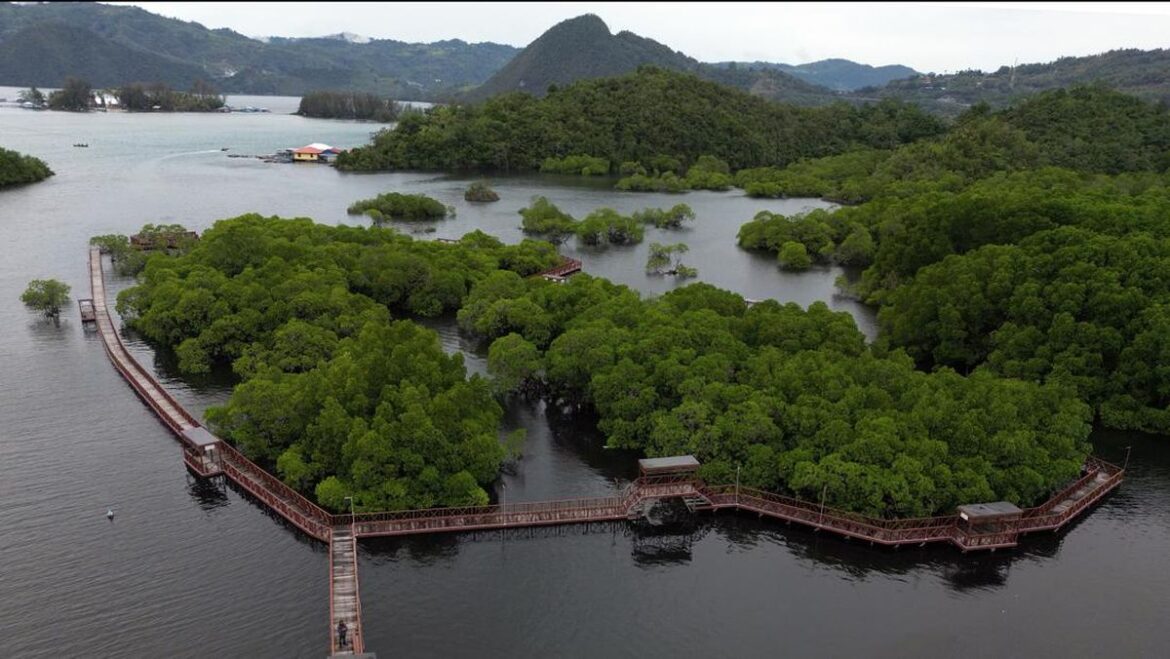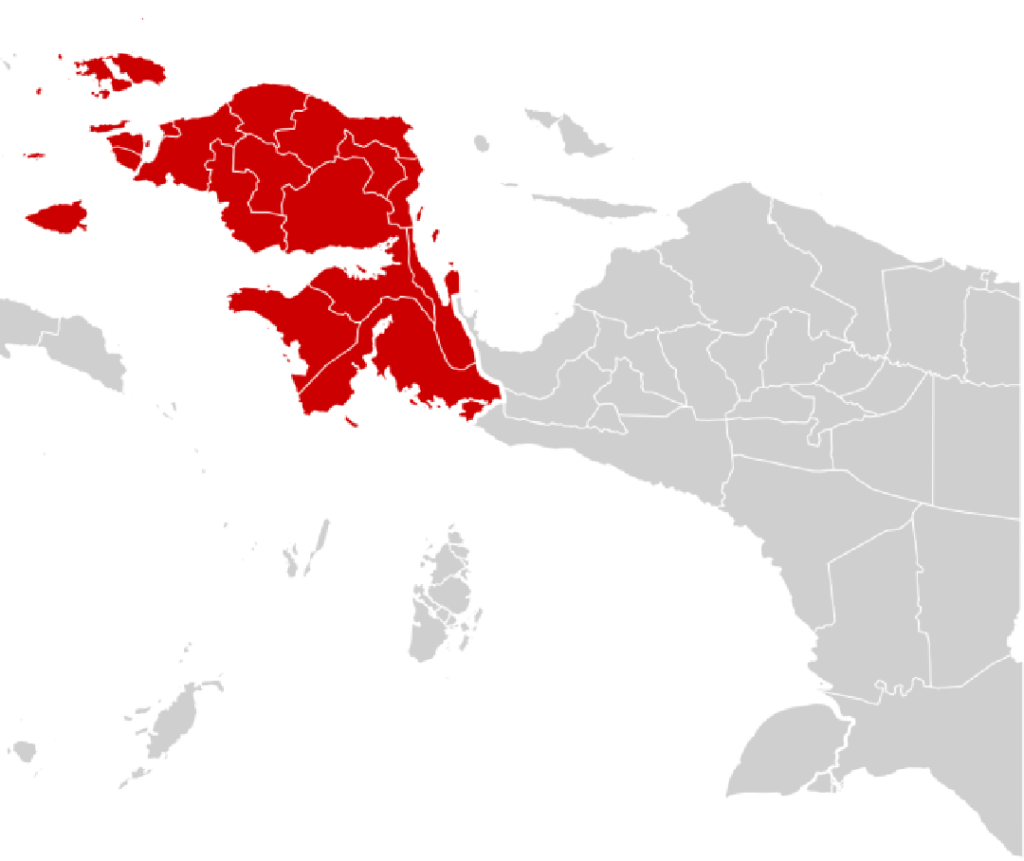Papua, Indonesia’s easternmost province, is a land of breathtaking landscapes, rich biodiversity, and vibrant indigenous cultures. From the crystal-clear waters of Raja Ampat to the serene expanse of Lake Sentani and the mangrove forests along Jayapura’s coast, Papua’s natural wealth has long captured the imagination of travelers and researchers alike. Yet, beyond its aesthetic allure lies an equally compelling economic story: the provincial government’s strategic push to develop ecotourism as a tool for sustainable growth, community empowerment, and environmental preservation.
Over the past few years, Papua’s leaders have recognized that its economic future cannot rely solely on extractive industries or sporadic tourism. Instead, ecotourism offers a path that intertwines economic opportunity with environmental stewardship. Acting decisively, the Provincial Government of Papua, through its Department of Tourism and Culture (Disparbud), has launched initiatives aimed at attracting domestic and international visitors while ensuring that local communities benefit directly. According to Yimin Weya, head of Disparbud Papua, the province’s abundant natural resources, rich wildlife, and well-preserved indigenous cultures provide an unparalleled opportunity to create sustainable tourism models that respect both people and planet.
Strategic Focus on Community and Environment
The province’s strategy emphasizes community involvement and environmental conservation. Although the budget allocation in 2025 for the tourism sector has decreased significantly from IDR 50 billion to IDR 5 billion, the province remains focused on strengthening priority ecotourism and providing training and assistance to existing Micro, Small, and Medium Enterprises (MSMEs), rather than building large-scale resorts or unchecked infrastructure. The government prioritizes projects that are small-scale, locally managed, and environmentally conscious. For instance, ecotourism programs focus on training local guides, promoting local handicrafts, and incorporating indigenous knowledge into tourism experiences. This approach ensures that economic benefits remain within the communities, creating jobs, enhancing skill sets, and fostering a sense of pride in local culture.
Based on data from the Papua Statistics Agency (BPS), the number of foreign tourist visits to Papua Province through the immigration gate in Jayapura City in July 2025 was 11,553, an increase of 9.31 percent compared to the previous month’s 10,569 visits. During that time there were 133 visits from the Asia region, six visits from the Americas, four visits from the European region, and 11,410 visits from the Oceania region. Meanwhile, the total number of local tourists who visited Papua from January to July 2025 reached 1,590,726, an increase of 126.77 percent compared to the same period of 2024, and the highest number of domestic tourist trips occurred in July 2025, reaching 268,807 visits. The main destinations for local tourists were Jayapura City at 39.98 percent, Jayapura Regency at 27.15 percent, Biak Numfor Regency at 10.51 percent, Keerom Regency at 10.19 percent, Yapen Islands Regency at 3.84 percent, Sarmi Regency at 2.95 percent, Supiori Regency at 2.91 percent, Waropen Regency at 1.81 percent, and Mamberamo Raya Regency at 0.65 percent.
The Department of Forestry and Environmental Affairs (DKLH) has also played a pivotal role in supporting these initiatives. From building ecotourism facilities to facilitating sustainable use of non-timber forest products, DKLH has been instrumental in strengthening the human and physical infrastructure needed for ecotourism to thrive. The collaboration between Disparbud and DKLH demonstrates a holistic approach—balancing economic growth with ecological sustainability, ensuring that development does not compromise the province’s natural wealth.
Iconic Destinations: Showcasing Papua’s Natural Splendor
Papua’s ecotourism potential is perhaps most vividly seen in its iconic destinations. Lake Sentani, near Jayapura, is emerging as a cultural and ecotourism hub. Surrounded by traditional villages, the area offers visitors a chance to witness the lifestyle, art, and rituals of indigenous Papuans. Eco-friendly activities such as canoeing, bird watching, and cultural workshops allow tourists to engage deeply with local culture without compromising environmental integrity. The government’s efforts here aim to preserve cultural heritage while enhancing livelihoods, demonstrating that tourism can be a vehicle for both education and economic empowerment.
Then, the Baliem Valley, located in Papua’s Jayawijaya Regency, is a breathtaking highland destination that combines dramatic landscapes, rich culture, and authentic experiences, making it a prime spot for eco-tourism and adventure travelers. Nestled at an altitude of 1,600 to 1,700 meters, the valley stretches approximately 80 kilometers long and 20 kilometers wide, surrounded by towering mountains, lush rainforests, and pristine rivers, with misty mornings adding to its mystical charm. Its temperate climate and scenic vistas, including the picturesque Lake Habbema and expansive grasslands dotted with endemic flora, create a serene yet majestic environment. Beyond its natural beauty, Baliem Valley is home to indigenous Dani, Lani, and Yali tribes, offering visitors a glimpse into traditional lifestyles, vibrant rituals, and cultural heritage, making it a unique destination where nature and culture coexist harmoniously.
Similarly, the mangrove forests along Jayapura’s coast provide another compelling example. Beyond their ecological importance as carbon sinks and natural coastal protection, these mangroves are being developed as educational ecotourism sites, highlighting the critical role of environmental conservation. Visitors learn about sustainable fishing practices, mangrove restoration, and biodiversity preservation, while communities benefit from guided tours and environmental stewardship programs.
Economic Impacts: From Tourism to Livelihoods
The economic rationale for Papua’s ecotourism strategy is clear. By attracting tourists and creating local enterprises, the province stimulates income generation, employment, and small business growth. Homestays, guided tours, handicraft production, and local food services are directly tied to tourism, creating diverse revenue streams for communities.
Moreover, ecotourism has a multiplier effect. Increased visitor numbers drive demand for transportation, food, and other services, circulating money throughout the local economy. Beyond immediate financial gains, ecotourism enhances human capital by fostering skills in hospitality, environmental management, and entrepreneurship. Over time, these competencies can generate long-term growth, reduce dependency on external aid, and encourage sustainable development practices.
Challenges and Solutions
Despite the promising outlook, developing ecotourism in Papua is not without challenges. Infrastructure, including roads, air transport, and accommodation, often remains limited, restricting access to remote destinations. Additionally, local communities require training in tourism management, financial literacy, and hospitality to fully capitalize on opportunities.
The government’s response has been multifaceted. Beyond physical infrastructure, it is investing in capacity-building programs, workshops, and partnerships with universities and NGOs. These initiatives equip residents with the knowledge and skills needed to manage ecotourism sustainably. Digital platforms are also being introduced to facilitate bookings, promotions, and marketing, connecting Papua’s destinations to global audiences.
Governance and Policy Support
Papua’s ecotourism agenda is closely linked to broader governance priorities, including transparency, efficiency, and equitable development. The provincial government recognizes that tourism growth must align with social equity. Policies ensure that profits from ecotourism are reinvested into community development, including education, health, and environmental protection.
Moreover, the government has embraced a participatory approach, involving local leaders, traditional authorities, and civil society in decision-making. This inclusion strengthens local buy-in, reduces conflicts over resource use, and enhances community stewardship over natural and cultural assets.
A Vision for Sustainable Growth
Papua’s ecotourism strategy represents a long-term vision for sustainable development. By marrying economic growth with environmental protection and cultural preservation, the province is positioning itself as a global model for responsible tourism.
As Acting Governor Agus Fatoni has emphasized in other development initiatives, such as the management of Special Autonomy Funds (Dana Otsus) and Additional Infrastructure Funds (DTI), strategic investment and effective governance can transform lives. Eco-tourism extends this principle: investments in people, culture, and nature can yield sustainable returns for communities while enhancing Papua’s national and international profile.
The Future of Eco-Tourism in Papua
Looking ahead, Papua’s ecotourism sector is poised for expansion. By prioritizing sustainable practices, community engagement, and environmental conservation, the province can attract a growing segment of conscious travelers seeking authentic, responsible experiences. This approach ensures that tourism growth does not come at the expense of ecological degradation or cultural erosion.
In the coming years, strategic collaborations with international agencies, private investors, and educational institutions will likely enhance infrastructure, training, and marketing. With careful planning, Papua could emerge as a premier ecotourism destination in Southeast Asia, combining economic development with environmental and cultural stewardship.
Conclusion
Papua’s development story is not just about geography or resources—it is about people, culture, and the environment. By investing in ecotourism, the provincial government is charting a path toward sustainable economic growth that benefits communities, preserves ecosystems, and celebrates indigenous culture. From Raja Ampat’s underwater marvels to Lake Sentani’s cultural richness and Jayapura’s mangrove education sites, ecotourism initiatives demonstrate the transformative power of well-managed, community-centered tourism.
Through strategic planning, governance, and partnerships, Papua is poised to become a beacon of sustainable tourism in Indonesia—a place where economic growth and environmental preservation walk hand in hand, and where the people of Papua are the architects of their own prosperity.


